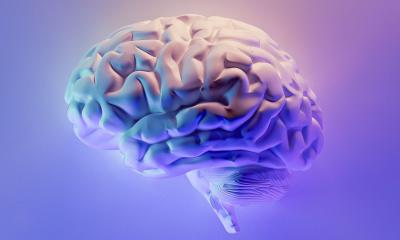News • Hand in hand
Why being left-handed matters for mental health treatment
Being left-handed apparently means a lot more than gripping things differently than most, researchers find. This sheds a new light on mental health treatment, because current therapies for the most common mental health problems could be ineffective or even detrimental to about 50 percent of the population.
For more than 40 years, hundreds of studies suggest that each hemisphere of the brain is home to a specific type of emotion: Emotions linked to approaching and engaging with the world – like happiness, pride and anger – live in the left side of the brain, while emotions associated with avoidance – like disgust and fear – are housed in the right. However, those studies have a critical flaw: they were done almost exclusively on right-handed people. That simple fact has given us a skewed understanding of how emotion works in the brain, according to Daniel Casasanto, associate professor of human development and psychology at Cornell University.
"Sword" hands vs "shield" hands

In his study, Casanto suggests that the opposite of that longstanding model might be true: Left-handed people, whose emotions like alertness and determination are housed in the right side of their brains, should receive the reversed treatment. A person’s neural systems for emotion might even be located differently depending on whether they are left-handed, right-handed or somewhere in between. The study, “Approach motivation in human cerebral cortex,” is published in Philosophical Transactions of the Royal Society B: Biological Sciences.
According to the new theory, called the "sword and shield hypothesis", the way we perform actions with our hands determines how emotions are organized in our brains. Sword fighters of old would wield their swords in their dominant hand to attack the enemy — an approach action — and raise their shields with their non-dominant hand to fend off attack — an avoidance action. Consistent with these action habits, results show that approach emotions depend on the hemisphere of the brain that controls the dominant "sword" hand, and avoidance emotions on the hemisphere that controls the non-dominant "shield" hand.
If you give left-handers the standard treatment, you’re probably going to make them worse
Daniel Casasanto
The work has implications for a current treatment for recalcitrant anxiety and depression called neural therapy. Similar to the technique used in the study and approved by the Food and Drug Administration, it involves a mild electrical stimulation or a magnetic stimulation to the left side of the brain, to encourage approach-related emotions. But Casasanto’s work suggests the treatment could be damaging for left-handed patients. Stimulation on the left would decrease life-affirming approach emotions. “If you give left-handers the standard treatment, you’re probably going to make them worse,” Casasanto said. “And because many people are neither strongly right- nor left-handed, the stimulation won’t make any difference for them, because their approach emotions are distributed across both hemispheres,” he said.
“This suggests strong righties should get the normal treatment, but they make up only 50 percent of the population. Strong lefties should get the opposite treatment, and people in the middle shouldn’t get the treatment at all.” However, Casasanto cautions that this research studied only healthy participants and more work is needed to extend these findings to a clinical setting.
Source: Cornell University
19.06.2018







